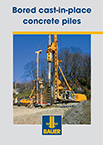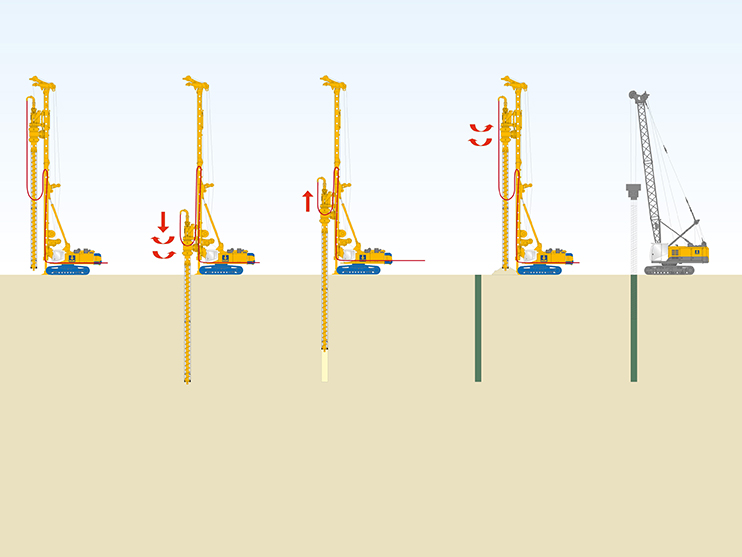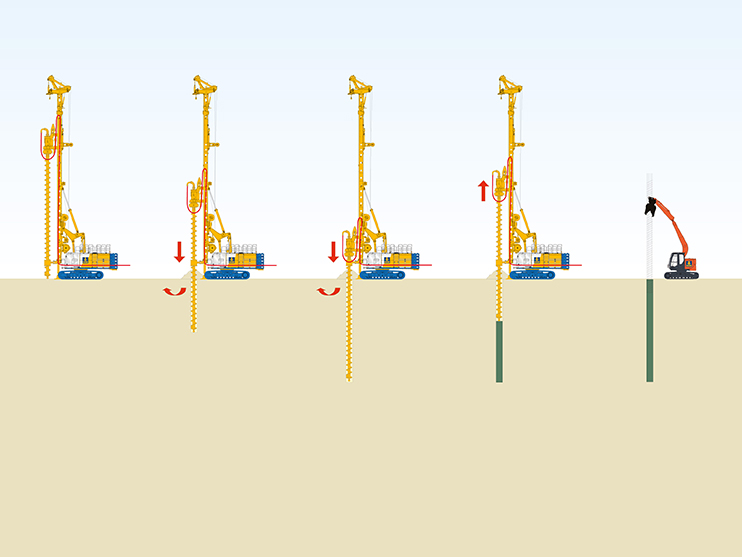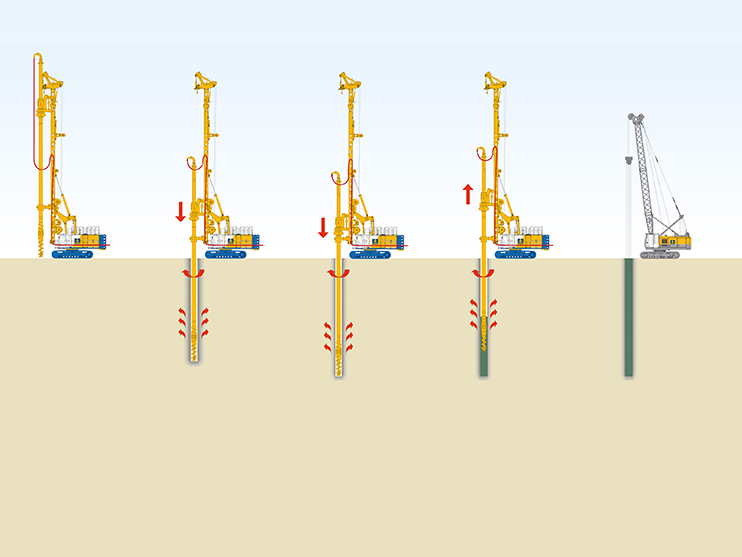Bored Piles
Bored piles are cylindrical bodies made of concrete (with or without reinforcement) which are installed in the ground by a variety of methods. They transmit high structural loads into lower, load-bearing soils. When installed in rows or in secant configuration they can form a supporting wall for an excavation pit or cut in the terrain, or block off groundwater. The length, diameter, material, shape and layout of the piles can be varied according to their intended use.
Types of Construction Method
The kelly method is used to produce uncased, partially or fully cased or slurry-supported bored piles. The soil is excavated by a drilling tool mounted at the tip of a telescopic kelly bar. When the fully cased pile technique is used, the insection of the full depth casing is simultaneous to the excavation, until the final depth is reached.
The double rotary system (DRS) links the CFA method with continuous auger to the installation of full casing. The result is a cased bore according to EN 1536, installed with a continuous flight auger. This method is particularly advantageous at high ground water levels and soil layers having a risk of uplifting which require drilling under water load with the kelly method.
The CFA-method is a rotary drilling method which permits high drilling performance (CFA 630, 750, 880 mm). This method employs a continuous flight auger as the drilling tool. When the final depth is reached, concrete is pumped from bottom to top through the hollow stem auger. The reinforcement is installed subsequently, where necessary assisted by vibration.
The FDP-system has a key advantage over the CFA-method in that it transports virtually no drilling spoil to the surface. It is suitable in displaceable soils. The drill rod has an auger as starter, followed by the displacement body and an extension casing. During drilling and extraction, the surrounding soil is displaced. Concreting and reinforcement is executed as in the case of the CFA-pile.









